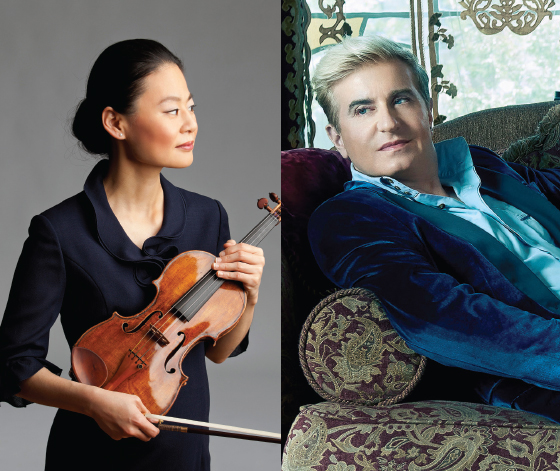Midori, Thibaudet open Beethoven year with a memorable “Kreutzer” at Kravis

And so it begins.
The celebration of the 250th anniversary of Beethoven’s birth in 1770 got off to a fast start Sunday afternoon in South Florida, with a blazing recital of three of the composer’s sonatas for violin and piano in West Palm Beach. The violinist Midori and pianist Jean-Yves Thibaudet teamed up for the concert at the Kravis Center, in a program that encompassed the early and middle periods of Beethoven’s compositional career.
There were two sonatas from his late 20s, the Violin Sonata No. 2, with its Haydnesque high spirits, and the weightier Violin Sonata No. 3, in which the heroic Beethoven begins to emerge. The program concluded with a famous work from his early 30s, the ambitious and majestic “Kreutzer” Sonata (No. 9), a product of his middle-period maturity.
Some may question the value of giving extra emphasis this year (or any year) to one of the least-neglected composers of all time. Yet Beethoven’s output is far greater than his three dozen or so best-known works, and concerts such as these provide the chance to experience some of his lesser-known compositions.
Yet it was the best-known piece on the program that made the strongest impression. Midori gave a stately and resonant account of the chords that open the Kreutzer sonata. After the piano joined in, the two launched into a vicious and dramatic performance of the ensuing Presto.
Midori chopped away with her bow over Thibaudet’s rumbling and thunder in the piano, creating a mood of extraordinary grim intensity. The storm rose, diminished and rose again, with their sedate moments of eye-of-the-hurricane repose rendering the return of the thunderclaps that much more ferocious. Many members of the audience, who had observed the no-applause-between-movements rule earlier couldn’t help bursting into applause after the last furious chord.
The Andante, a theme and variations, was marked by grace and a feel for Beethoven’s melody. Thibaudet gave a light, airy performance of the buoyant theme of the first variation. Midori showed an ability to play in a manner that was soft yet highly articulated, creating a delicate texture that seemed to look forward to Mendelssohn. As the mood darkened to a minor key, Thibaudet brought sepulchral weight and mystery to his procession of chords.
The concluding Presto was aptly jubilant, Midori ornamenting Thibaudet’s playing and bringing a uniquely granular texture to the busy accompaniment.
The concert opened with The Sonata for Violin and Piano No. 2 in A Major, Op. 12, no. 2. This is youthful, good-humored music, with an impish and unforgettable opening theme, and they gave it the high-spirited performance it needed. They played without exaggeration, letting the music speak for itself, but took care to shape every phrase, with little pauses and phrase breaks to allow the humor to come through.
The ensuring Andante was far different and far darker. Here, Midori took center stage, playing the recurrent melody with a tone that ranged from modest, to gaunt to searing as the music gained intensity. The concluding Allegro was marked by a return of the high spirits, with particularly sparking cascade of notes in violin and piano.
The Sonata for Violin and Piano No. 3 in E-flat Major, Op. 12, no. 3 is a work of greater breadth and force. In the opening Allegro, Thibaudet was in the spotlight, giving a grand and sweeping account of the heroic piano part that was reminiscent of the big sonatas Beethoven would write for that instrument. Midori played in a deferential manner, as he took center stage in this music.
In the Adagio, Midori played the melody with a restrained intensity, bringing out the misty, precociously Romantic tone of the music. The concluding Rondo felt underpowered, however, and lacking in a sense of musical architecture. The movement builds to an joyful climax topped by the violin, and this felt whiffed over, without any feeling that it was the high point of the movement.
That aside, however, this was a fine recital that provided a stunning performance of one of Beethoven’s most famous works and worthy readings of two less frequently performed compositions.
Posted in Performances
Leave a Comment
Sun Jan 5, 2020
at 6:19 pm
No Comments